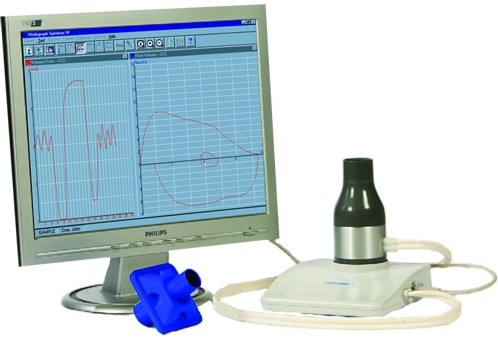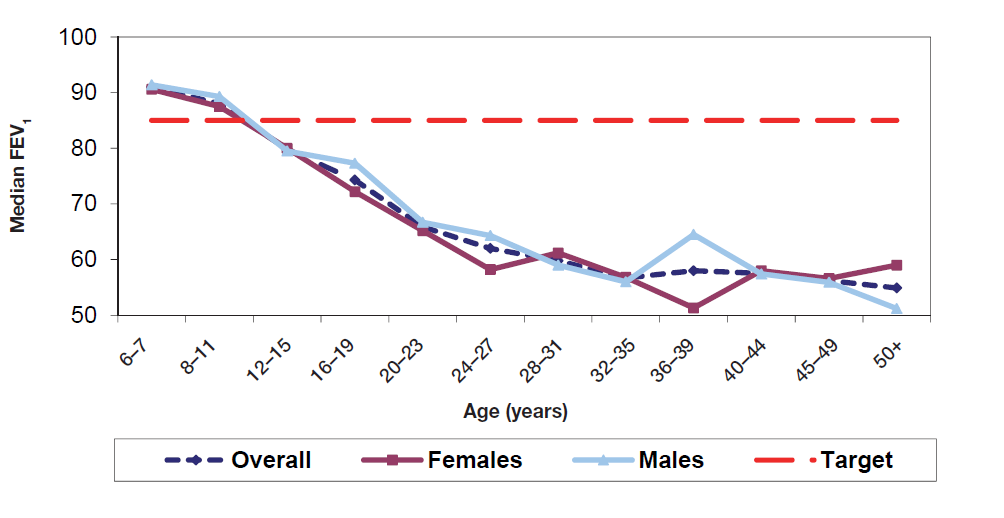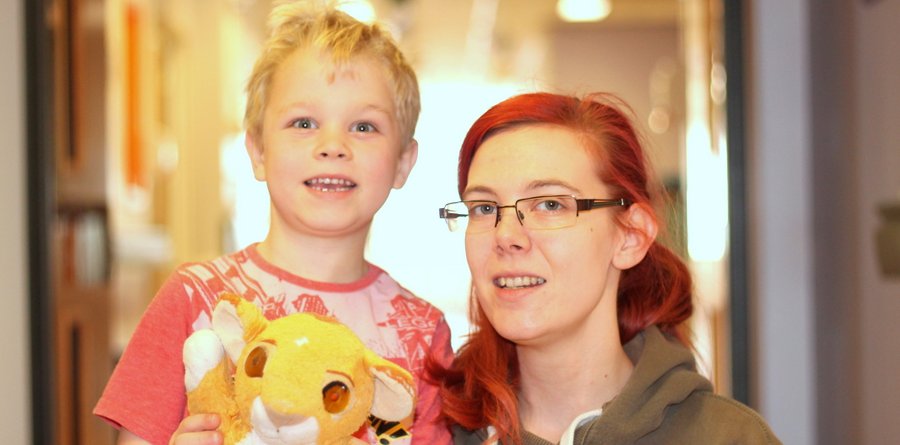Lung function
Measuring lung function regularly is an important way checking to see if the airways are clogged up. For lung function to be reliable children need to make maximal effort every time, which is difficult for most children under 5 years of age.
 The lung function machine (called a spirometer) measures the total volume of air that the subject breathes out, and the time taken for the air to come out. The machine reports several values, but the one we take most notice of is the volume of air that is breathed out in the first second. This is called the Forced Expiratory Volume in one second or FEV1. If the airways are clogged up with mucous, the speed of the air coming out of the lungs slows down, and so the volume of air that comes out in one second, the FEV1, is reduced. The machine compares the FEV1 values of the patient to those that would be expected of a child of the same gender, height and age. This gives the 'precent predicted' value; and FEV1 result that is 100% predicted is what would be expected, but normal values can range from 90% to 120%. The lung function machine (called a spirometer) measures the total volume of air that the subject breathes out, and the time taken for the air to come out. The machine reports several values, but the one we take most notice of is the volume of air that is breathed out in the first second. This is called the Forced Expiratory Volume in one second or FEV1. If the airways are clogged up with mucous, the speed of the air coming out of the lungs slows down, and so the volume of air that comes out in one second, the FEV1, is reduced. The machine compares the FEV1 values of the patient to those that would be expected of a child of the same gender, height and age. This gives the 'precent predicted' value; and FEV1 result that is 100% predicted is what would be expected, but normal values can range from 90% to 120%.
The average FEV1 percent predicted values tend to fall with age as shown in the graph. One of the main aims of CF care is to keep the lung function as close to 100% (or more) for as long as possible.
 Data from the CF Trust registry report 2013 | 





